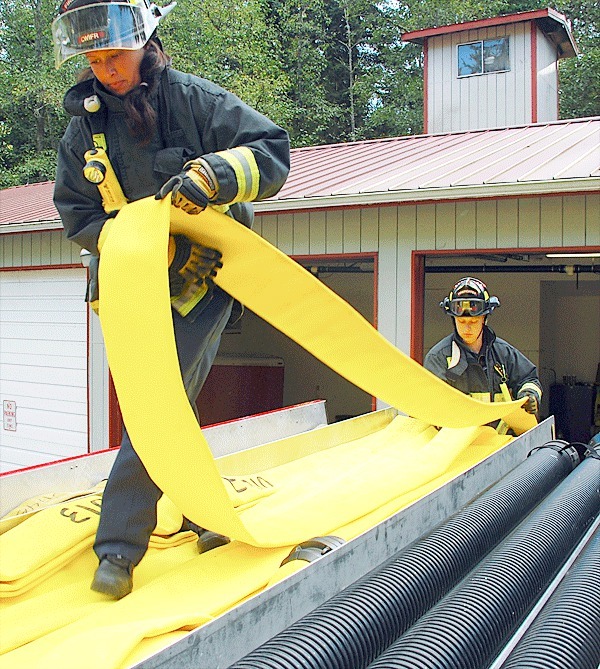Faced with a shortage of manpower, Central Whidbey Fire and Rescue officials have decided to close the district’s oldest active fire station and will likely seek a levy-lid lift early next year.
Last week, the fire district’s board of commissioners voted to mothball Station 52, a three-bay pole barn building located on Morris Road. Built in 1986, the station currently houses a water tender and rescue truck and will shut down Nov. 15.
Due to the facility’s central location, both vehicles serve an important role as secondary response units, according to Fire Chief Ed Hartin. Though they will be redistributed to two of the district’s three remaining stations, Hartin worries that response time will suffer.
However, there is little choice in the matter.
“We’re kind of in a rock and a hard place,” Hartin said.
Although it lacks the big budgets of large urban departments, the fire district still has to provide 24-hour emergency response to about 10,000 people. While some of that is accomplished with full and part-time firefighters, the agency’s backbone has always been its volunteers.
Coming from all walks of life, they are asked to undergo massive amounts of training, wake up in the middle of the night to respond to calls and risk their lives in service to their community. And, of course, they do it all for free.
“They really are essential,” Hartin said.
However, their numbers are on the decline. In 1993, the district had a small army of 57 volunteers at its disposal. Today, while they still account for over 50 percent of Central Whidbey firefighters, their numbers have dwindled to about 20.
According to Hartin, that’s a big problem for facilities like Station 52, which should be manned by at least 12 volunteers. It’s currently served by just three and that’s too few to maintain an effective response.
The decline in volunteers isn’t just a local problem.
“The same challenge is being faced by departments across the country,” Hartin said.
While part of the problem in Central Whidbey may be due to rising median age of 51, the requirements of becoming a firefighter may also be taking a toll. Generally, it takes about one year to go from raw recruit to hardened firefighter, Hartin said. And it’s not cheap either.
“One thing people don’t realize is that volunteers aren’t really free,” he said.
Training, testing, and gear for each person costs the district about $5,000. To make up some of that money, and to fund new recruitment programs and two new paid firefighter positions, Hartin said the district will likely seek a levy hike this February.
While he doesn’t yet know just how much it will be, the information will be hammered out in time for a Nov. 17 special meeting. The board will discuss the issue in detail and take public comment.



